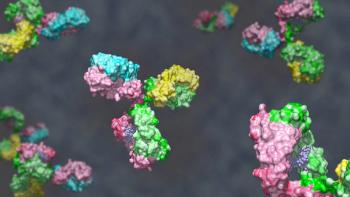
Configuring Manufacturing Operation Management Applications
Adopting single-use systems has implications for manufacturing execution systems (MES), process data-analytics tools, and scheduling. Enterprise resource planning and MES must be integrated using standards such as ISA-95. Master and electronic batch records must be designed to capture the details of single-use component assembly to enable traceability.
The adoption of single-use systems (SUS) and technologies, either for a new plant or for an existing facility that is converting from traditional stainless-steel (SS) equipment, results in numerous benefits. Increased flexibility, lower capital cost, reduced risk of contamination, and simplified cleaning validation and cleaning practices are just a few of the known positive outcomes. To ensure the success of the conversion, the adoption of SUS requires detailed examination of all areas involved to anticipate potential issues and to innovate in specific areas of manufacturing and the global supply chain. This article examines aspects of enterprise and manufacturing systems that are impacted by SUS and provides recommendations on how to increase their effectiveness to realize the benefits expected from the adoption of SUS.
Data generated during the procurement and inspection steps and relevant information provided by the vendor are essential to understand the performance of SUS in the context of global production data and the potential effect of SUS on finished-product characteristics. SUS data are used for routine process monitoring, troubleshooting, and multivariate analysis. In addition, more companies are adopting quality-by-design practices, and as a result, an in-depth understanding of SUS is becoming increasingly relevant. Integrated enterprise resource planning (ERP) and electronic systems for manufacturing operations management (MOM), such as manufacturing execution systems (MES) and finite scheduling, provide key functionality to manage the use of these data and to understand the effects of SUS in the context of global production.
Tracking single-use materials
ERP and MES capture, in electronic form, the relevant data to track and trace the single-use (SU) materials used in a batch. To achieve visibility of a complete genealogy, these systems need to be properly integrated following established standards such as the International Society of Automation (ISA) ISA-95 (1). Foundational work must first be accomplished; the creation of detailed process maps showing the source systems, the flow of materials and data, and the dependencies across the ISA-95 hierarchies is crucial (2).
Another consideration is the design and configuration of master and electronic batch records specifically designed to capture the details of SU-component assembly. These details are regarded as “make items” in MES terminology and have been traditionally used to track the details of the bioreactor set-up steps. Plants with primarily stainless-steel systems track equipment use and clean status using paper logs or MES functionality for equipment management (EQM).
This type of facility needs to explicitly design recipes for cleaning and steaming, as well as “hold times” that move a vessel into clean expiry if not used within a particular timeframe. These requirements add complexity to MES systems because there are more equipment states to be tracked and the recipes to perform cleaning require not just the equipment itself but also a cleaning pathway (i.e., the clean-in-place [CIP] skid, transfer lines, and potentially transfer panels).
For SUS, MES should enable traceability and capture sufficient details to obtain a complete picture of the batch genealogy, including details of the SUS and their subparts. In SU facilities, the equipment is treated as a raw material and the meaning of “clean status” and “use state” take a different meaning than in stainless-steel facilities. In SUS, there is less emphasis on EQM and more dependency on ERP-genealogy features. As a result, the complex MES algorithms needed to represent equipment state become simpler (e.g., no “clean hold” or “dirty” states apply), but a higher level of detail is required to fully capture the SUS characteristics in ERP and to obtain the full picture of SUS as part of batch genealogy. SU components must be incorporated in the bill of materials (BOM), which will enable full traceability and calculation of a realistic cost of consumables.
Adding SU components to the list of raw materials required to make a batch also has the effect of increasing the size of the BOM and the potential need for investigation of supply-chain issues. SU technologies (similar to all raw materials) exhibit inherent variability caused by normal variations in their raw materials or manufacturing process. In addition to the traditional genealogy (i.e., where SU materials are used), manufacturers need to understand the potential effect of SUS characteristics (e.g., leachables and extractables) on overall process performance and product quality attributes. The availability of data generated during procurement and quality-control evaluation of raw materials, as well as “usable data” provided by the SU vendor, are essential for comprehensive data analysis. Adopting electronic systems for data analytics that are designed for this purpose and implementing their genealogy functionality are essential to accomplish successful traceability, enable troubleshooting and analysis, and facilitate process investigations.
Effect on scheduling
Users of SU technologies have observed that while no CIP/steam-in-place (SIP) steps are required for disposables, there is a significant increase in the number of tasks required for proper assembly and testing of the system prior to use compared to stainless-steel systems. Similarly, system breakdown post use, decontamination, and disposal activities need to be accounted for in terms of actual time and resources. For SUS, a high level of control is crucial over the timing of the goods issue process, retrieval of the SU components, assembly, testing, and other pre-use steps (e.g., pipe welding). Proper recording of the system and ancillary components identification can be a significant hidden task, particularly for facilities that use paper-based batch records and logs. In addition, SU-intensive facilities are typically less automated than an equivalent size stainless-steel facility, primarily because of their highly interconnected unit operations (e.g., transfer lines) and because there is no need to track equipment-clean states. This lower level of automation translates into a higher degree of complexity to fully and accurately represent the sequence and duration of process steps for SUS in finite scheduling systems.
Figure 1 shows a representation of the level of complexity expected as a function of the degree of SU adoption at a typical facility. The actual SUS set up includes issuing the materials, preparing kits, and actual assembly, as well as a number of “hidden” tasks, such as welding and visual inspection.
The duration of these steps presents some degree of variability from operator to operator, depending on their level of expertise. Figure 2 (courtesy of Rick Johnston, Bioprocessing Group, from original data) shows a cross-industry average of the time spent for pre-use for upstream main operations in facilities with primarily SUS compared to facilities that mainly use traditional, stainless steel bioreactors. These data do not include media preparation times or CIP/SIP of bioreactors in the case of stainless steel. Two important observations appear from these data. First, the variability in the time to prepare a stainless vessel (excluding cleaning) is much lower than with SUS. This is due to the fact that all the equipment is already assembled, while in the case of SU components it must be issued, assembled, and tested in situ--each of which may have an associated delay. The second is that the average time in the stainless-steel case is slightly lower (approximately 2.5 h) compared to the SU case (3.9 h), which reflects the increased complexity of pre-use steps in SUS.
With increased adoption of SUS and the continuing analysis of the information collected from their use, manufacturers will be able to refine models and obtain better understanding of the actual impact of this very promising technology.
Acknowledgments
The author would like to thank Jan-Henrick Dieckert (Werum), Rick Johnston (Bioprocessing Group), and John Maguire (Shire) for their contributions to this article.
References
1. ISA, ISA95 Manufacturing Enterprise Systems Standards and User Resources, 3rd Edition (Research Triangle Park, NC, 2011).
2. Gadea-Lopez, G. and Korkmaz, B., “Successful Implementation of MES with ISA S88 and S95 Standards”, Presentation at MES 2013 8th Annual Forum on Manufacturing Execution Systems, Philadelphia, PA, USA, August 13-14, 2013.
This article appears in the BioPharm International 2014 Single-use Systems eBook.
Newsletter
Stay at the forefront of biopharmaceutical innovation—subscribe to BioPharm International for expert insights on drug development, manufacturing, compliance, and more.




